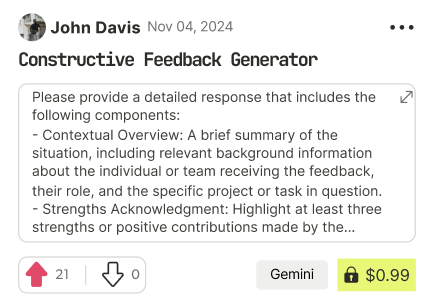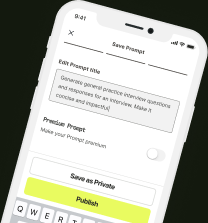Financial Wellness System: Eliminating Money Anxiety & Building Confidence
This comprehensive financial wellness system is designed to eliminate money anxiety and cultivate lasting financial confidence. It provides frameworks for clarity, optimization, debt management, emergency preparedness, and psychological resilience, tailored to address specific financial stressors and ensure both immediate relief and long-term security.
1. Frameworks for Financial Wellness:
Financial Clarity Creation:
Action: Conduct a complete financial inventory. List all assets (savings, investments, property) and liabilities (debts, loans).
Tool: Utilize budgeting apps (Mint, YNAB), spreadsheets, or financial planning software.
Outcome: Understand your net worth, income sources, and expense categories. Identify areas of strength and weakness. This foundational clarity reduces uncertainty and anxiety stemming from the unknown.
Cash Flow Optimization:
Action: Track income and expenses meticulously for at least 30 days. Categorize spending (needs vs. wants).
Strategy: Implement zero-based budgeting or the 50/30/20 rule (50% needs, 30% wants, 20% savings/debt).
Outcome: Identify spending leaks, optimize resource allocation, and generate surplus for savings and debt reduction. Controlled cash flow fosters a sense of financial control.
Sustainable Debt Elimination:
Action: Prioritize debts using the debt snowball (smallest balance first for motivation) or debt avalanche (highest interest rate first for savings) method.
Strategy: Negotiate lower interest rates with creditors. Explore balance transfers or debt consolidation loans if beneficial. Increase debt repayment amounts incrementally.
Outcome: Systematic debt reduction frees up cash flow and reduces the psychological burden of debt, paving the way for financial freedom.
Emergency Preparation:
Action: Establish an emergency fund covering 3-6 months of essential living expenses in a readily accessible, liquid account (high-yield savings).
Strategy: Automate regular contributions to the emergency fund. Treat it as non-negotiable savings. Explore additional insurance coverage if needed (disability, long-term care).
Outcome: A robust emergency fund provides a safety net against unexpected events (job loss, medical emergencies), significantly reducing anxiety related to unforeseen financial shocks.
Psychological Resilience Building:
Action: Practice mindfulness and gratitude exercises to shift focus from financial lack to abundance.
Strategy: Cognitive reframing – challenge negative financial thought patterns and replace them with positive, empowering beliefs. Seek support from financial therapists or counselors if needed.
Outcome: Develop a healthy relationship with money, manage financial stress effectively, and cultivate a resilient mindset that can weather financial challenges.
2. Specialized Approaches for Financial Stressors:
Debt Burden:
Tactical Response: Debt consolidation, credit counseling, debt management plans. Aggressively pursue debt reduction strategies (snowball/avalanche). Focus on increasing income through side hustles or skill enhancement to accelerate debt payoff. Psychological Focus: Acknowledge debt burden without shame, celebrate small wins in debt reduction, and visualize a debt-free future.
Income Instability:
Tactical Response: Diversify income streams (multiple jobs, freelance work, passive income). Build a larger emergency fund (6-12 months). Develop a flexible budget that can adjust to fluctuating income. Psychological Focus: Embrace adaptability, focus on skill development and marketability, build confidence in your ability to generate income through multiple avenues.
Market Volatility:
Tactical Response: Long-term investment perspective, diversification across asset classes, avoid emotional trading. Rebalance portfolio periodically. Focus on fundamental financial health (cash flow, debt). Psychological Focus: Understand market cycles are normal, focus on long-term financial goals, separate emotions from investment decisions, seek advice from a financial advisor if anxiety is high.
Future Uncertainty (Economic Downturn, Job Security):
Tactical Response: Proactive career development and networking, skill upgrading, build multiple emergency funds (personal and career transition fund), reduce non-essential expenses, explore recession-resistant industries. Psychological Focus: Focus on what you can control (skills, expenses, emergency fund), develop a proactive and adaptable mindset, build a strong support network, practice scenario planning to feel more prepared.
3. Implementation Protocols for Immediate Relief and Long-Term Security:
Immediate Relief (Days 1-7):
Action 1: Quick Financial Assessment: Identify immediate financial stressors (overdue bills, urgent debt).
Action 2: Emergency Budget Creation: Cut all non-essential spending to maximize cash flow.
Action 3: Debt Communication: Contact creditors if facing immediate payment difficulties and explore hardship programs.
Mindset: Acknowledge and validate financial anxieties. Practice deep breathing and stress-reduction techniques. Focus on taking control with small, immediate actions.
Building Long-Term Security (Weeks 2-90+):
Action 1: Comprehensive Financial Plan: Implement frameworks (clarity, cash flow, debt, emergency).
Action 2: Financial Education: Learn personal finance principles through books, courses, and reputable online resources.
Action 3: Regular Financial Review: Schedule weekly/monthly financial check-ins to track progress, adjust budget, and reinforce positive habits.
Action 4: Long-Term Goal Setting: Define clear financial goals (retirement, homeownership, financial independence) and create a roadmap to achieve them.
Mindset: Cultivate patience and consistency. Celebrate milestones and progress. Embrace continuous learning and adaptation. Shift from a scarcity mindset to an abundance mindset.
4. 90-Day Financial Transformation Plan:
Phase 1: Stress Reduction (Days 1-30):
Week 1-2: Financial Awareness & Immediate Action:
Action Steps: Financial inventory, expense tracking, create emergency budget, contact creditors if needed.
Mindset Practices: Acknowledge anxiety, practice daily mindfulness (5-10 minutes), positive affirmations focused on control and capability.
Week 3-4: Cash Flow Optimization & Initial Debt Management:
Action Steps: Implement chosen budgeting method (zero-based, 50/30/20), identify and cut unnecessary expenses, choose debt elimination strategy (snowball/avalanche) and make first extra debt payment.
Mindset Practices: Focus on small wins, visualize positive cash flow, practice gratitude for financial resources.
Phase 2: Confidence Building (Days 31-60):
Week 5-8: Emergency Fund Foundation & Deeper Debt Reduction:
Action Steps: Automate emergency fund contributions, increase debt repayment amounts if possible, explore opportunities for increasing income (side hustle, skill development).
Mindset Practices: Visualize financial security, celebrate progress in debt reduction and emergency savings, practice cognitive reframing to challenge negative money beliefs.
Week 9-12: Investment Education & Long-Term Planning:
Action Steps: Learn basic investment principles, explore low-risk investment options (if debt and emergency fund are in progress), set long-term financial goals (retirement, etc.), create a preliminary long-term financial plan.
Mindset Practices: Visualize long-term financial success, focus on building wealth and financial freedom, practice financial affirmations focused on abundance and prosperity.
Phase 3: Positive Financial Empowerment (Days 61-90):
Week 13 (Ongoing): Financial Mastery & Resilience:
Action Steps: Regularly review and adjust financial plan, continue debt elimination and emergency fund building, increase investment knowledge and portfolio diversification, explore financial independence strategies.
Mindset Practices: Embrace financial empowerment, focus on continuous learning and growth, practice gratitude for financial well-being, share financial knowledge and support with others.
Conclusion:
By consistently implementing these frameworks, specialized approaches, and the 90-day plan, individuals can move from a state of money anxiety to one of financial confidence and empowerment. This system is not a quick fix, but a sustainable journey towards long-term financial wellness, built on clarity, action, and a resilient mindset. Start today, take small steps, and celebrate your progress towards a brighter financial future.

Eliminate Financial Stress
- gemini
- Try Prompt

Find Powerful AI Prompts
Discover, create, and customize prompts with different models, from ChatGPT to Gemini in seconds

Simple Yet Powerful
Start with an idea and use expert prompts to bring your vision to life!